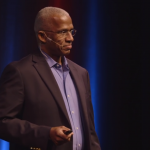As a company grows, it becomes all too easy for a CEO to lose sight of what made the business special to begin with, and that can be detrimental in the extreme. Quality can suffer, and ultimately the customer will, too. That will, in time, lead to ruin for the company in question.
To prevent that from happening, the person in charge has to have vision. He or she must not only be able to see where the business is heading, but where it has been. And it is essential to never, ever lose sight of the customer.
The organization’s brand — its mission, the content, and the employees — can fall out of line with its purpose. All that must be kept in mind as the business grows.
The Allure Group, a network of six skilled nursing facilities in Brooklyn and Manhattan, started out as a single facility in 2011. And I founded the company because I saw deficiencies in the care my own grandfather received late in life. Providing the best possible care is, as a result, something Allure has always kept in mind as it has grown. That means hiring top-notch healthcare professionals and giving them the tools that will enable them to do their jobs as well as possible. It means providing residents with quality amenities and extras that make their day-to-day lives better.
It also means that leadership must always have its hand on the pulse of the organization — that it must understand what needs to happen as the business evolves and, again, forever keep the business’s origins in mind.
That is always job number one: understanding what your venture should be about, and making that clear to everyone in the organization.
Here are other necessary steps to ensure that a company’s quality keeps pace with its growth.
1. Make astute hires.
A CEO will almost certainly not be able to meet with every candidate for every position, so it must be made clear to hiring managers just what it is that you’re looking for — how, ultimately, employees are your company. They communicate, consciously and unconsciously, what you represent, so it is essential that you bring in people who make a positive impression.
It also helps, on the management level, to bring in people who disagree with you — not in an obnoxious, self-serving way, but in a way that forces you, as a CEO, to look at things from a different perspective. “Yes-men” might stroke your ego, but they are ultimately not the kind of people who foster true growth.
A case in point was when I started a business years ago, in the pre-Allure days, and hired primarily friends and family members. Too often I knew more than they did, the result being that they could not provide appropriate feedback nor give adequate advice. That put me in a position where I felt like I had to do everything myself, which, needless to say, is not a sustainable business model.
Over the last 15 years I have been careful to hire managers who complement my strengths and weaknesses — who in many cases know more about a given topic than I do. I listen to what they have to say, and that makes all the difference in the world.
2. Connect with your employees.
Often when businesses are in their infancy, the leaders and employees find themselves working side by side; it is frequently required that people become jacks-of-all-trades.
But as companies grow, roles become more defined and it grows more difficult for a CEO to maintain the same relationships with long-time employees, much less subsequent hires. To bridge the gap, it is essential that CEOs and managers go out of their way to connect with employees, whether courtesy of regular meetings or in more casual ways.
I make regular visits to all the facilities in Allure’s network, as do all the upper-level managers. My weekly visits tend to focus on the census, and thus are shorter, but my monthly visits center on operations and can last as long as five hours. I might spend an extended period in the kitchen, for example, or a nursing station. This helps me troubleshoot problems, while also developing an understanding and appreciation for employees’ day-to-day lives.
3. It’s always about the customer.
…or the patients, as the case may be. This can get lost as companies grow. In Allure’s case, for instance, we have to guard against quality varying from one facility to the next. And we feel we’ve succeeded.
A particular point of pride is our commitment to technology. We employ EarlySense, a contact-free remote patient-monitoring system that tracks vital signs and movements courtesy of sensors placed under pillows or cushions. In addition to the obvious benefits, it lessens the burden on healthcare professionals, who in essence can be in two places at once.
We also make use of robotics in patient rehabilitation, including devices that hasten their recovery from hand and arm issues, and one that enables them to “re-learn” how to walk. In addition, Allure offers gamified therapy, which has been found not only to incentivize patients but also to give our staff a clear idea of where they stand in their recovery.
Finally, we make use of Constant Care e-vitals, which transmits patients’ vital signs directly to their electronic medical records, and the AlterG Anti-Gravity treadmill, which enables patients to rehab soon after major surgery, as the apparatus takes the strain off impacted joints.
4. Never stop learning.
My staff and I are always looking for ways to improve, and thus ensure continued growth. For instance, we get regular input from the resident advisory councils in each of our facilities, which lets us know what is working and what is not. We also pay attention to what our competitors are doing, as any businessperson must do, in any endeavor. Failing to do so is only asking for trouble.
Also, we have regular brainstorming sessions, during which we might implement one of every six ideas. We constantly revisit those that fail to make the cut, as there are sometimes cases where it simply wasn’t the right time to implement one thing or another. I have often said, in fact, that we learn more from our mistakes, as the negative tends to shape the positive.
Always, however, we are cognizant of our residents’ needs. That is ultimately the bottom line.





